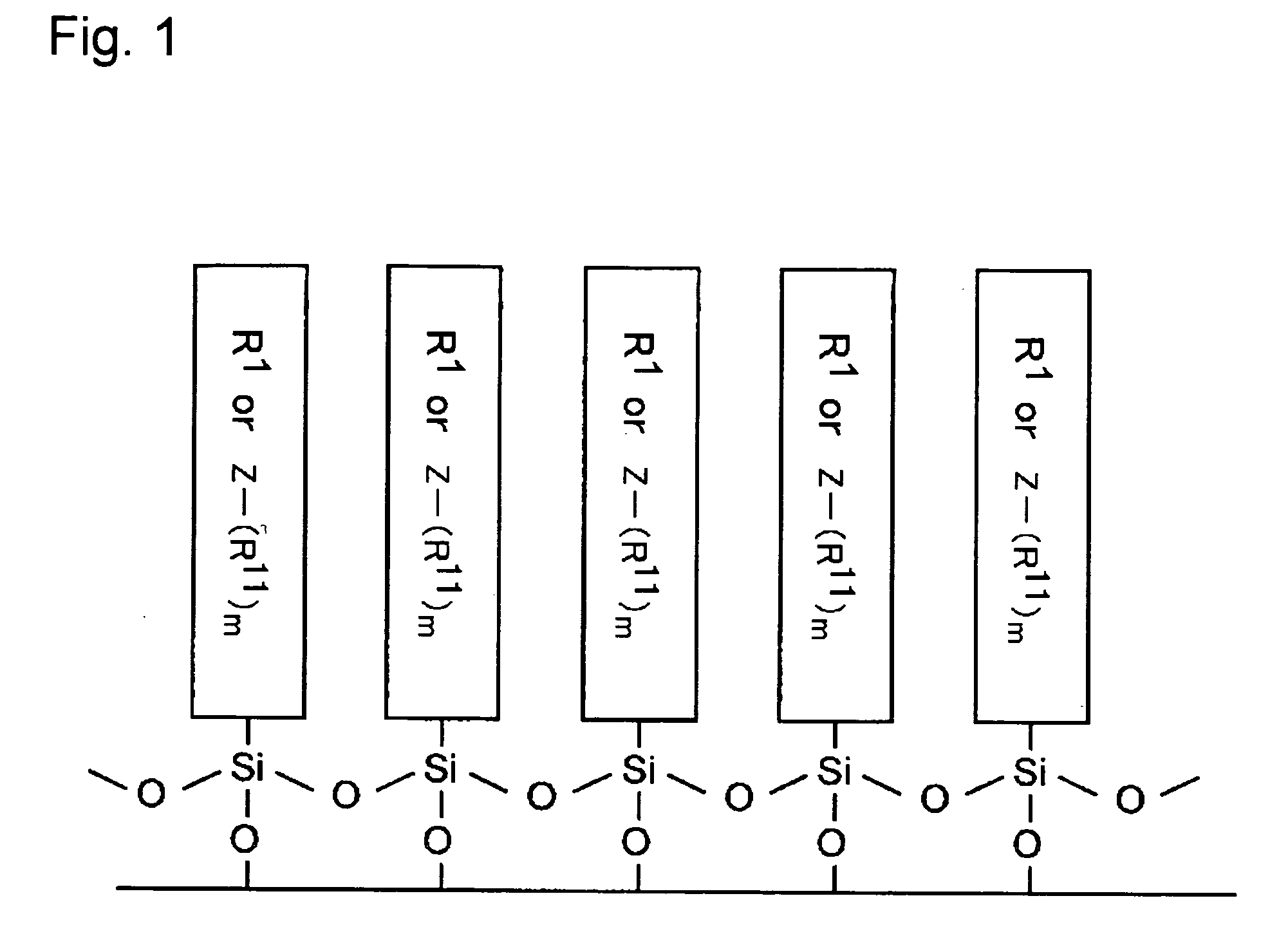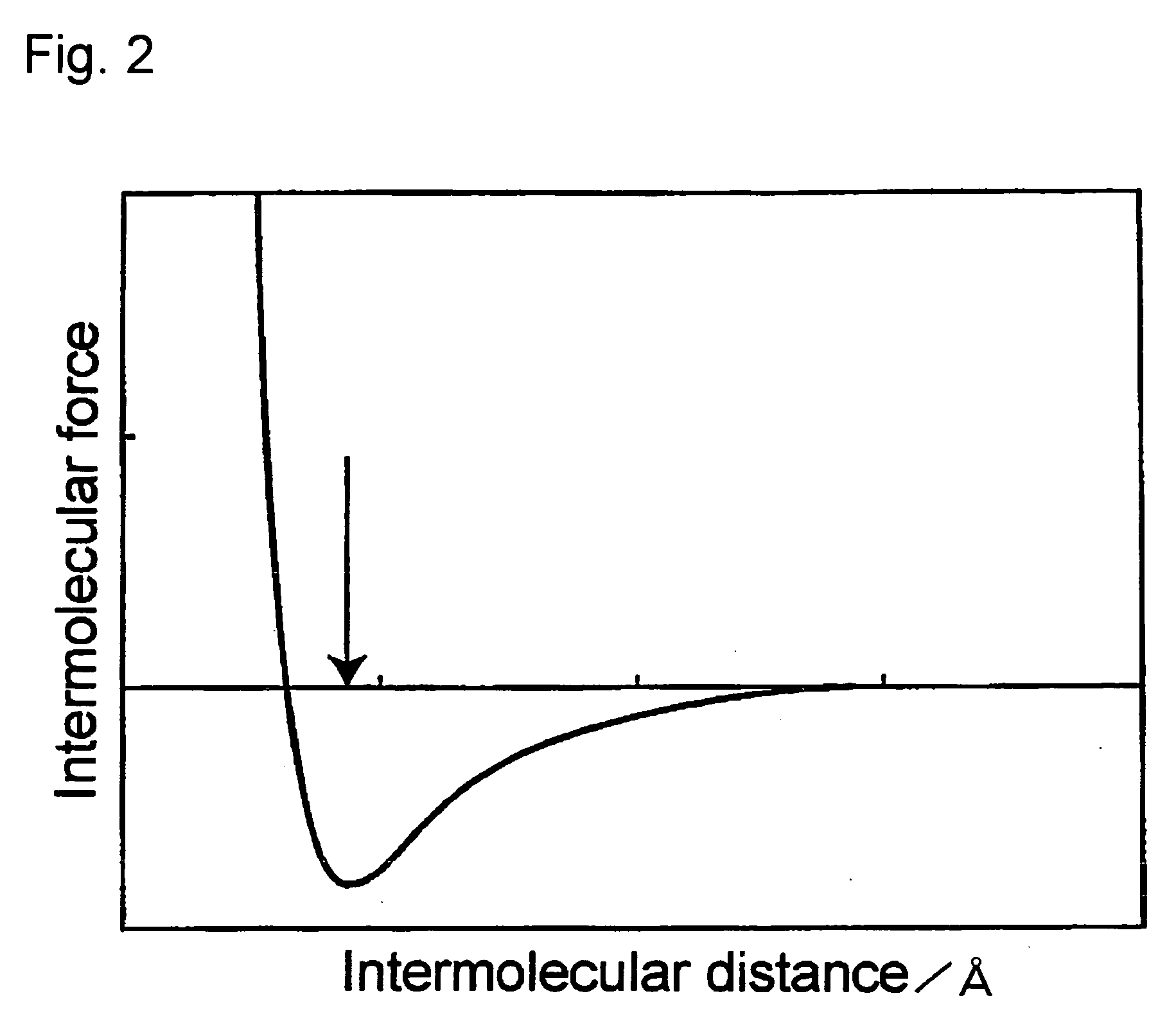Electron-Conjugated Organic Silane Compound and Production Method Thereof
a technology of organic silane and electron-conjugated silane, which is applied in the direction of organic chemistry, group 3/13 element organic compounds, and conductors, etc., can solve the problems of easy exfoliation of the film, difficult to provide the conductivity of the self-structured film, and complicated production process, etc., to achieve high stability and crystallization, easy to be produced, and resistant to physical exfoliation
- Summary
- Abstract
- Description
- Claims
- Application Information
AI Technical Summary
Benefits of technology
Problems solved by technology
Method used
Image
Examples
example 3
Preparative Example 3
Preparation of the Octiselenophene Triethoxysilane Represented by General Formula (1) (X1═X2═X3═OC2H5; Y═Se; R2═R3═H; and n1=8)
[0241]First, 5 ml of dry THF and 5 mM of the intermediate 2-bromoquaterselenophene obtained in Preparative Example 2 were placed in a 50-ml round-bottomed flask under a nitrogen environment; magnesium was added thereto; and the mixture was stirred for three hours. Then, 5 ml of dry THF containing a catalyst Ni(dppp)Cl2 and 5 mM of 2-bromoquaterselenophene was added thereto, and the mixture was allowed to react at 0° C. for 12 hours. After extraction with purified water, the product was purified by flash chromatography, to give octiselenophene (30%).
[0242]Subsequently, 50 ml of chloroform and 10 mM of the octiselenophene above were placed in a 100-ml round-bottomed flask; the mixture was cooled to a temperature of 0° C.; 10 M of NBS was added thereto; and the mixture was stirred for 1 hour. After extraction with purified water, the produc...
example 4
Preparative Example 4
Preparation of the Silole Compound Having a Substituent Group (Methyl Group) Represented by General Formula (1) (X1═X2═X3═Cl; Y═Si; R2═H; R3═CH3; and n1=2)
[0251]The compound was prepared according to the synthetic route 2. Specifically, 20 mM of 2,5-bromo-3,4-dimethyl-1H-silole was first dissolved in ethanol solvent; the solution was added into an ethanol solution containing 22 mM of butyllithium, converting the 5-bromo group into a Li group; and a THF solution of 12 mM of CuCN was added thereto, allowing oxidative addition of copper. Subsequently, 30 mM of trimethylethylenediamine and 100 mM of para-dinitrobenzene were added for coupling between two molecules, to give 5′-dibromo-3,4,3′,4′-tetramethyl-1H,1H′-[2,2′]bisilolyl at a yield of 60%.
[0252]Then, 5 ml of dry THF, 5,5′-dibromo-3,4,3′,4′-tetramethyl-1H,1H′-[2,2′]bisilolyl above, and magnesium were placed and stirred for one hour in a 200-ml round-bottomed flask under a nitrogen environment, to give a Grigna...
example 5
Preparative Example 5
Preparation of the Silole Compound Having a Substituent Group (Methyl Group) Represented by General Formula (1) (X1═X2═X3═Cl; Y═Si; R2═H; R3═CH3; and n1=6)
[0260]First, an intermediate 5,5′-dibromo-3,4,3′,4′-tetramethyl-1H,1H′-[2,2′]bisilolyl was prepared in a similar manner to Preparative Example 4. The intermediate was then processed according to the synthetic route 3. Specifically, 5 ml of dry THF, 5 mM of 5,5′-dibromo-3,4,3′,4′-tetramethyl-1H,1H′-[2,2′]bisilolyl and magnesium were first placed and stirred for 5 hours in a 200-ml round-bottomed flask under a nitrogen environment, to give a Grignard reagent. Then, 10 mM of 5-bromo-3,4,3′,4′-tetramethyl-1H,1H′-[2,2′]bisilolyl and 30 ml of THF were placed in a 100-ml round-bottomed flask equipped with a stirrer, a reflux condenser, a thermometer, and dropping funnel and cooled in an ice bath; the Grignard reagent was added thereto; and the mixture was allowed to react at 0° C. for 15 hours. After extraction with ...
PUM
| Property | Measurement | Unit |
|---|---|---|
| conductivity | aaaaa | aaaaa |
| size | aaaaa | aaaaa |
| electric-field-effect mobility | aaaaa | aaaaa |
Abstract
Description
Claims
Application Information
 Login to View More
Login to View More - R&D
- Intellectual Property
- Life Sciences
- Materials
- Tech Scout
- Unparalleled Data Quality
- Higher Quality Content
- 60% Fewer Hallucinations
Browse by: Latest US Patents, China's latest patents, Technical Efficacy Thesaurus, Application Domain, Technology Topic, Popular Technical Reports.
© 2025 PatSnap. All rights reserved.Legal|Privacy policy|Modern Slavery Act Transparency Statement|Sitemap|About US| Contact US: help@patsnap.com



